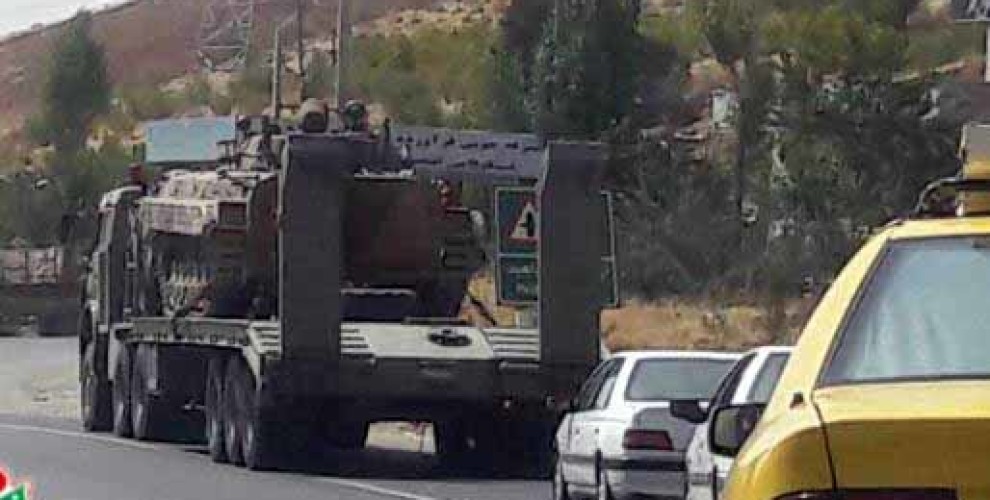
Since the beginning of the Islamic Republic of Iran’s ruling, East Kurdistan has always witnessed widespread civil disobedience for various reasons and has become more widespread over the past years.
Protests against the Turkish invasion of Afrin, support of Erdogan by the Iranian regime, worrisome growth in Kolber (border workers) killings, execution of political prisoners, the Iranian attack on the headquarters of Kurdistan Democratic Party (of Iran) in south Kurdistan, and objection to the inflation are among few recent protest examples in East Kurdistan.
The security agencies’ clash with activist has increased significantly in recent years, especially since the last summer.
Since the early spring, the regime have transferred military ammunition to the Kurdish region and attempted to build rocket bases in the highlands, exhibited military vehicles in urban city centers and flew warplanes over the cities of Eastern Kurdistan which reveals the regimes’ military approach towards Kurdistan.
The Kurdistan Human Rights Network published a report about the recent change of the senior intelligence and security officials in most of the cities in Eastern Kurdistan. According the the network, former security officials have been questioned by regime officials following the general strike in centers Kurdistan. In the meantime, the director general of the intelligence office has been replaced in Sine province. Moreover, in other cities, new security agents have been hired. New intelligence and army teams are established with the aim of terrorizing Eastern Kurdistan through detainment, torture and threatening social, political and environmental activists with death. These teams have been active especially in the cities of Marivan, Saqez, Kamyaran, Solawa, Baneh, Sine and Kermashan.
The summons, threats, and detainment of citizens and civil activists were not limited to the Ministry of Information as the IRGC intelligence has also summoned some of these individuals individually.
The murdering of Sharif Bajur and Omid Kohneposh as a joint operation project of IRGCs intelligence agency and the ministry of the intelligence office:
Ministry of intelligence in a number of interrogations threatened civil activists with death: they have stated while arresting known individuals could lead pressure from international human rights organizations on the Islamic Republic of Iran. In order to reduce these pressure, other programs have been on the agenda such as “physical removal through fabricated scenarios such as accidents”. Such solutions not only relieve the security institutions from the pressure but also eliminates the civil activists with ease.
The statement by one of the activists interrogated by ministry of intelligence about “physical removal through fabricated scenarios accidents” is reflected in the murder of Sharif Bajur and his companion. It seems that the Ministry of intelligence have used the same method in the killing of them on August 25th.
Furthermore, the Kurdish Human Rights Network have raised concern about the expansion of a new special unit group by the name “Saberin” in East Kurdistan. This contra-guerrilla group is formed by the Revolutionary Guards and Ministry of Intelligence as cannon fodder in guerrilla warfare. It is said that the special unit Saberin has been deployed in the cities of Baneh, Sardasht, Piranshahr, Kamyaran, Paveh, and Jwanro. The members of this criminal gang are also used in intelligence operations. Moreover, elements of the group disguise themselves in civilian clothes to infiltrate the society, especially in the areas where the revolutionary forces of East Kurdistan are likely to be present. Local sources have reported on the deployment of units from this gang around the mountains of Qandil, Kosalan, Dalaho as well as in the areas of Marivan, Piranshahr,
The Kurdish Human Rights network has quoted a member of Basij in Urmia stating: “given that the areas from Maku to
As of now, there are no details about the size of chemical weapons in Iran’s possession. The Islamic Republic of Iran began its chemical weapon program in 1983, as a response to the use of chemical weapons by Saddam Hussein’s regime. After a year (1984) Iran manufactured its first chemical bomb. The Iranian regime is estimated to have over 2000 tons of chemical weapons where the majority is nerve gas. There have been reports in past on transfer of chemical weapons from Iran to Libya, published mainly by western media.
There have been some reports about the use of chemical weapons by the Iranian regime in the final years of the war with Iraq. Additionally, the statements made by Saberin special units in the interview with Kurdistan Human Rights Network suggests that the Revolutionary Guards have chemical weapons in stock. The same person in the interview who personally participated in the Qandil war against the guerrillas of PJAK in 2011, further adds: “at the time, due to the prolongation of the conflicts and the impossibility of capturing the strategic points of Qandil mountain- the IRGC had been distributing masks to their forces and announced that the use of chemical weapons can be used as a final option if these conflicts carry on”.

The published images of Sharif Bajur and Omid Kohneposh corpses shared on the social media strengthens the likelihood of use of chemicals weapons in a scenario fabricated by the IRGC.
Also, a number of villagers around the Shaho mountains in conversation with Kurdistan Human Rights Network, have been spoken about the IRGC sending advanced equipment and performing experiments around Shaho area. According to the villagers, this heavy and modern weapons and warfare equipment has been transferred to the Shaho mountains since 22th of September.